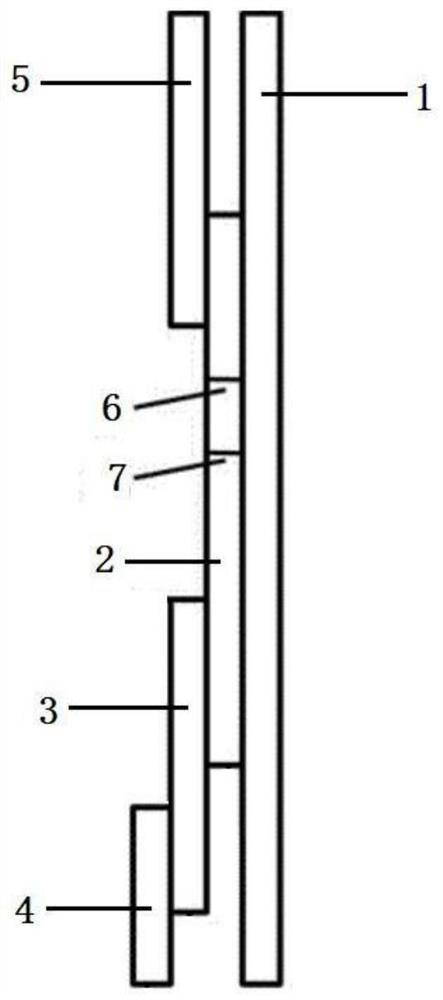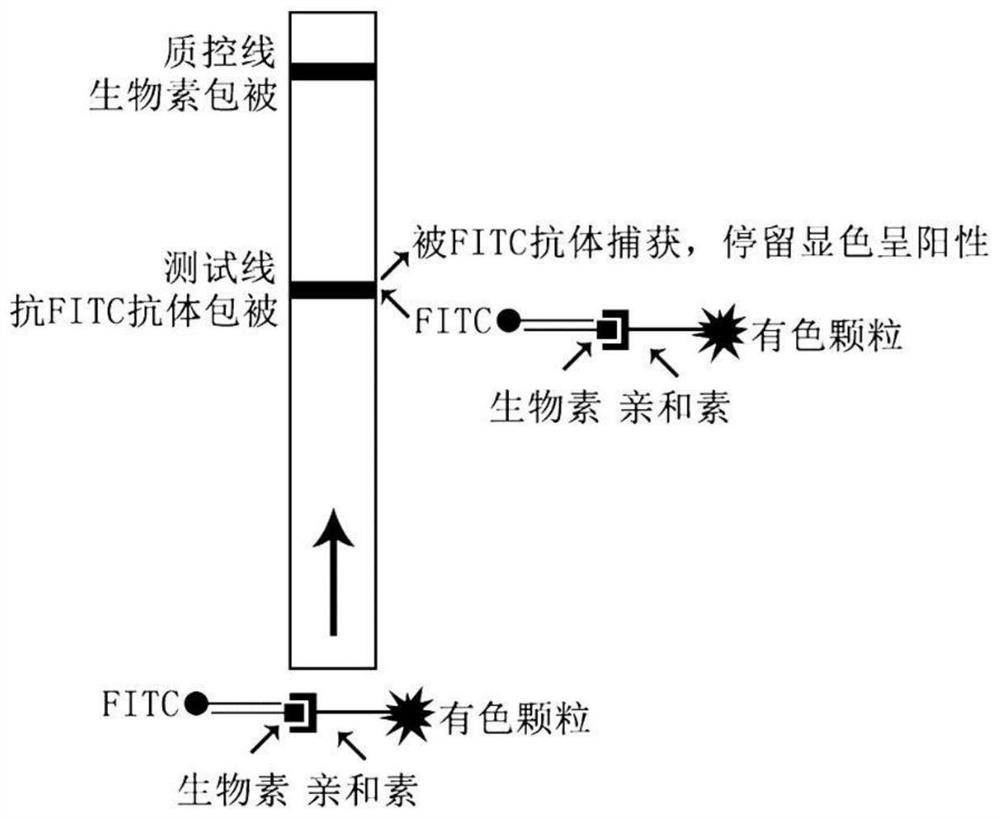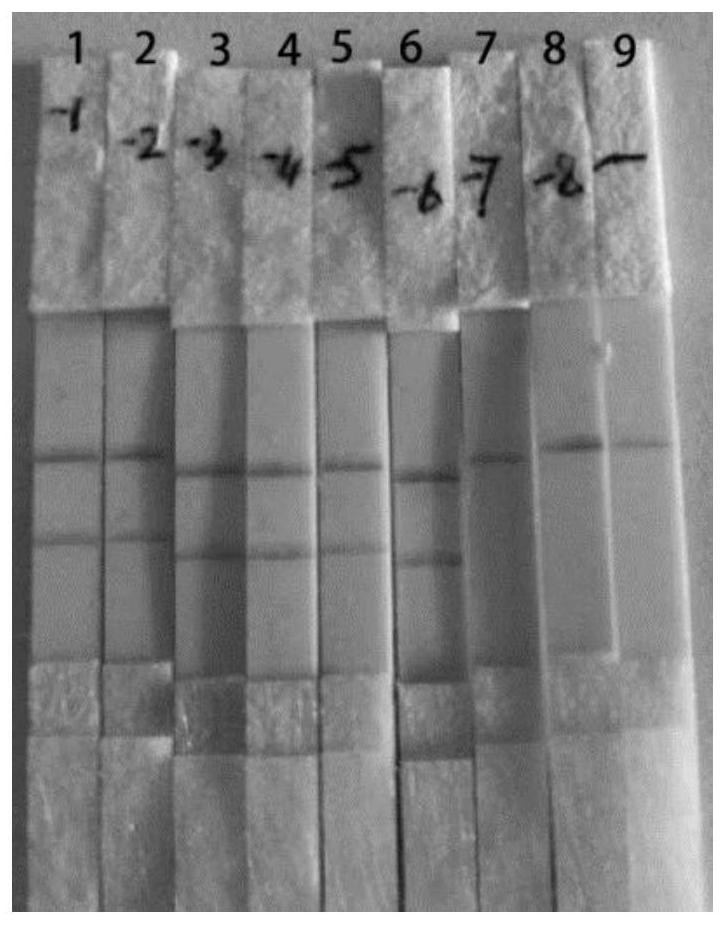Nucleic acid sequence, kit and method used for isothermal amplification detection of yersinia pestis and application
A constant temperature amplification detection and Yersinia pestis technology, which is applied in the direction of microorganism-based methods, biochemical equipment and methods, and microorganism measurement/inspection, can solve the problems of large investment costs and false positives, and achieve good applicability and steps Simple and improved detection sensitivity
- Summary
- Abstract
- Description
- Claims
- Application Information
AI Technical Summary
Problems solved by technology
Method used
Image
Examples
Embodiment 1
[0069] The composition of the Yersinia pestis constant temperature amplification detection kit is as follows:
[0070] ②Isothermal amplification reaction solution: 20mM Tris-HCl (pH=8.8), 10mM KCl, 10mM (NH 4 ) 2 SO 4 , 1MMgSO 4 , 10×Thermo pol buffer, 5M betaine, 8U / μl Bst DNA polymerase, 10mM dNTPs, 0.1μM each for SEQ ID No.1 and SEQ ID No.2, 0.3μM for SEQ ID No.3, and SEQ ID No.4 0.3 μM, SEQ ID No.5 0.6 μM; the primers and probes involved were synthesized at Shanghai Sangon Bioengineering Co., Ltd., and the sequences are shown in Table 1.
[0071] ③ Positive control template: a DNA fragment synthesized in vitro containing the pla gene of Yersinia pestis. The preparation method of the positive control template is as follows: perform PCR amplification on the genomic DNA of Yersinia pestis with downstream strand displacement primers and upstream strand displacement primers; purify the amplified products with Roche PCR product purification kit; measure A 260 Quantify and d...
Embodiment 2
[0074] The specific method of the kit to detect Yersinia pestis:
[0075] Step 2: Add the step DNA as a template into the PCR tube containing the constant temperature amplification reaction solution, add the positive control template and the negative control into the control PCR tube respectively, and take 2 μl of sample DNA and control DNA, and 18 μl of reaction solution , the total reaction volume is 20μl; the amplification reaction is carried out at 60°C for 90min;
[0076] Step 3: Put the reacted PCR tube into the nucleic acid test strip anti-pollution detection device for detection, and interpret the experimental results after 5 minutes: when the quality control line (C line) and the detection line (T line) of the test strip are both When it is red, it is positive, indicating that the sample contains Yersinia pestis nucleic acid; when the quality control line (C line) of the test strip is red, and the detection line (T line) is colorless, it is negative, indicating that t...
Embodiment 3
[0077] Embodiment 3 sensitivity evaluation
[0078] The in vitro synthetic DNA standard containing the Yersinia pestis pla gene fragment is diluted 10 times and then detected by the kit and detection method of the present invention.
[0079] The preparation method of the in vitro synthetic DNA standard substance containing Yersinia pestis pla gene fragment is:
[0080] The Pla gene fragment of Yersinia pestis was artificially synthesized, and a 456bp specific fragment was amplified by using primers SEQ ID NO: 1 to SEQ ID NO: 2. The A260 was quantified by a spectrophotometer, and then converted and diluted to 1.0×10 7 copy / mL. Store at -20°C as a working standard.
[0081] see results image 3 , where 1~8 are 10 respectively 7 ~10 0 Copy the DNA standard, 9 is the negative control.
[0082] Experimental results show that the detection sensitivity of the kit of the present invention to the nucleic acid of Yersinia pestis is 100 copies of DNA molecules / reaction, so as to me...
PUM
| Property | Measurement | Unit |
|---|---|---|
| Sensitivity | aaaaa | aaaaa |
Abstract
Description
Claims
Application Information
 Login to View More
Login to View More - R&D
- Intellectual Property
- Life Sciences
- Materials
- Tech Scout
- Unparalleled Data Quality
- Higher Quality Content
- 60% Fewer Hallucinations
Browse by: Latest US Patents, China's latest patents, Technical Efficacy Thesaurus, Application Domain, Technology Topic, Popular Technical Reports.
© 2025 PatSnap. All rights reserved.Legal|Privacy policy|Modern Slavery Act Transparency Statement|Sitemap|About US| Contact US: help@patsnap.com



